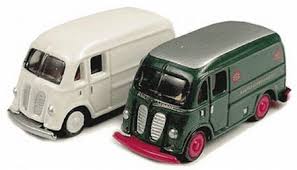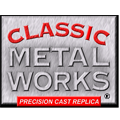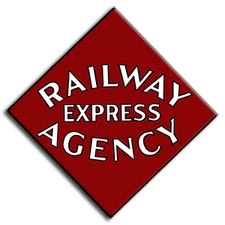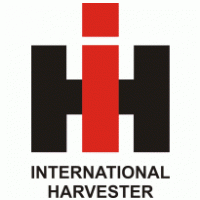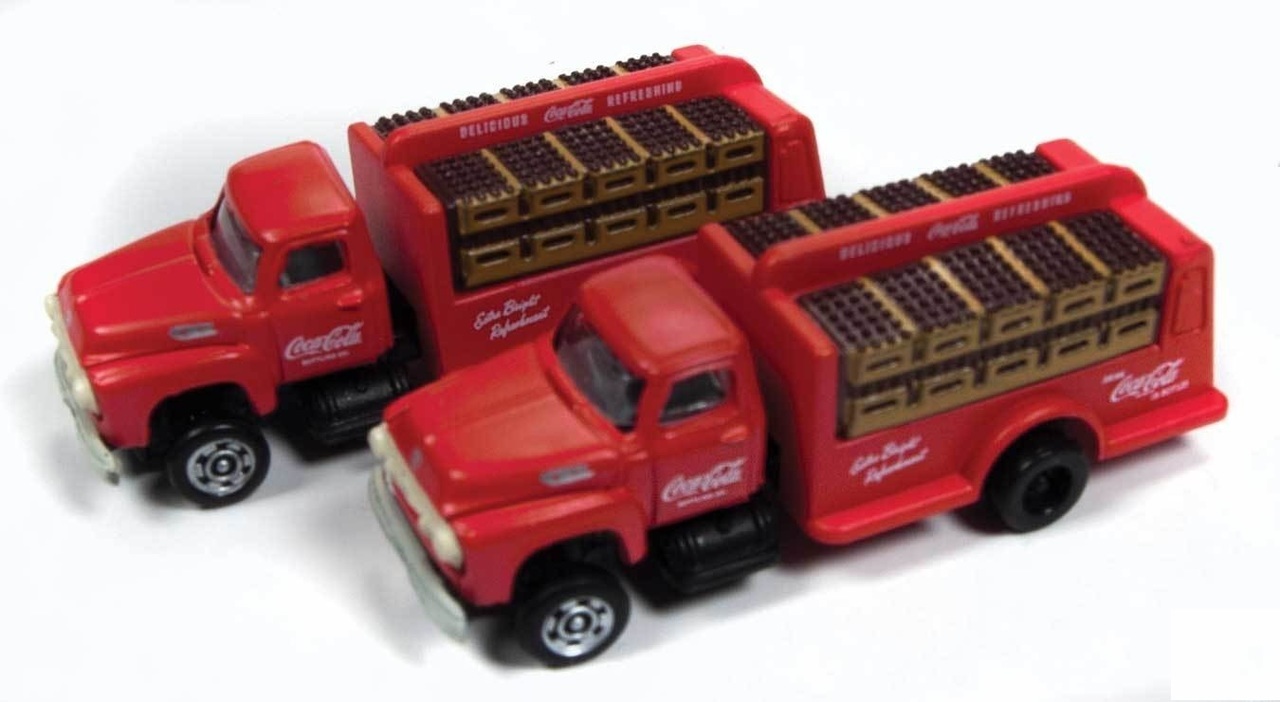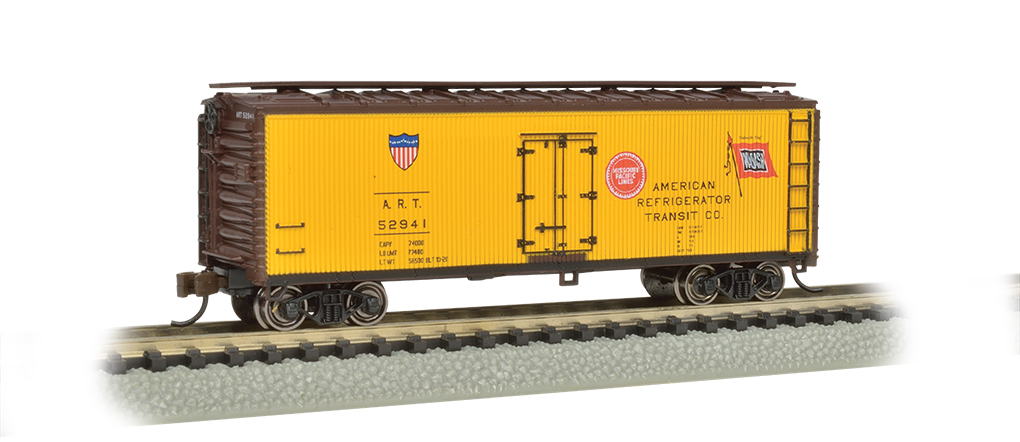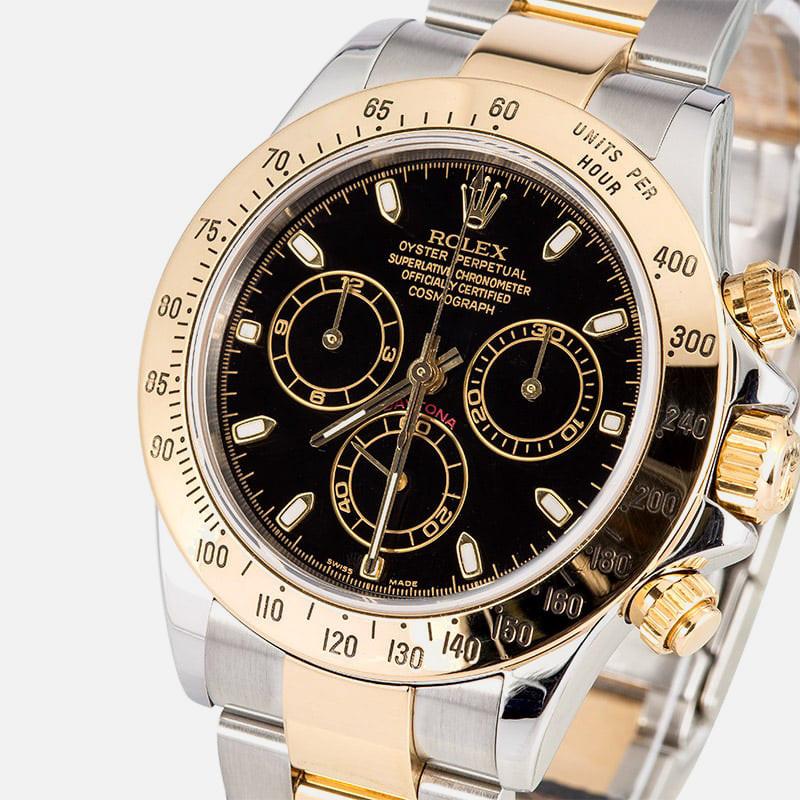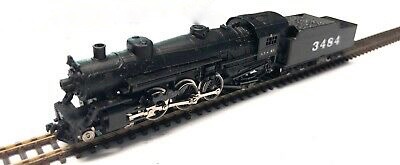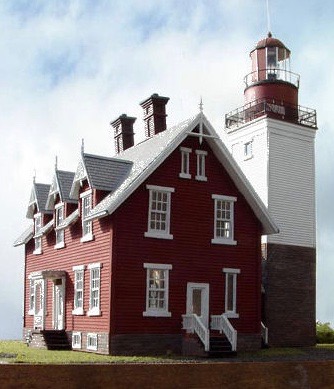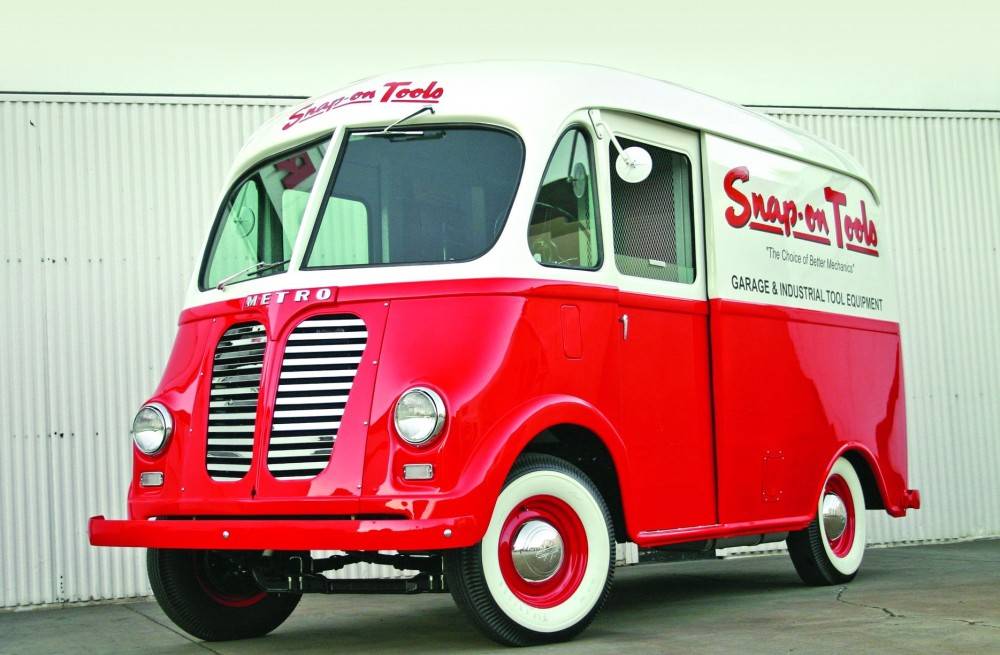Specific Item Information: Shown as new in the 2002 Walthers N&Z Reference Book page 289.
Model Information: International Harvest Metro Van
Prototype History: The Metro was conceived as a route delivery van or utility rig with ample room for cargo and an emphasis on maneuverability. The original 1939 Metro was based on the International D-series light-truck chassis and was offered with a short 102-inch wheelbase or a long 113-inch wheelbase. International didn't manufacture the Metro's body--that was left up to the Metropolitan Body Co. in Bridgeport, Connecticut. While modern step-van bodies are built from aluminum, the Metro's double-wall shell was fashioned from steel with an air space between inner and outer panels as well as insulation hidden above the inside ceiling.
In the rear was the "Metro Magic" overhead door that was weighted to stay open at any height. Buyers could also opt for double barn-style swinging doors, which opened wide to accommodate larger items in the Metro's cargo bay.
In the cockpit, controls and gauges were minimal. On the instrument panel, two round bezels housed a gauge cluster and a speedometer. To the driver's left, there was a manual choke and throttle as well as a dome lamp switch. To his right, a switch for the exterior lights, an ignition key and starter button. Both the handbrake and the shift lever were long enough to reach from the driver's seat (which was more of a stool, really, with a curved back), while the big steering wheel was high and oddly angled to afford the driver unobstructed access through the sliding side door during deliveries. Some practicality was even built into the Metro's engine cover: It was topped with a ribbed tray that had a slight edge around the circumference to serve as a place for packages or a driver's clipboard.
In the rear was the "Metro Magic" overhead door that was weighted to stay open at any height. Buyers could also opt for double barn-style swinging doors, which opened wide to accommodate larger items in the Metro's cargo bay.
In the cockpit, controls and gauges were minimal. On the instrument panel, two round bezels housed a gauge cluster and a speedometer. To the driver's left, there was a manual choke and throttle as well as a dome lamp switch. To his right, a switch for the exterior lights, an ignition key and starter button. Both the handbrake and the shift lever were long enough to reach from the driver's seat (which was more of a stool, really, with a curved back), while the big steering wheel was high and oddly angled to afford the driver unobstructed access through the sliding side door during deliveries. Some practicality was even built into the Metro's engine cover: It was topped with a ribbed tray that had a slight edge around the circumference to serve as a place for packages or a driver's clipboard.
Road Name History: The Railway Express Agency (REA) was a national monopoly set up by the United States federal government in 1917. Rail express services provided small package and parcel transportation using the extant railroad infrastructure much as UPS functions today using the road system. The United States government was concerned about the rapid, safe movement of parcels, money, and goods during World War I and REA was its solution to this problem. REA ceased operations in 1975, when its business model ceased to be viable.
The first parcel express agency in the United States is generally considered to have been started by William Frederick Harnden (1812-1845), who in 1839 began regular trips between New York City and Boston, Massachusetts as a courier transporting small parcels, currency and other valuables. William G. Fargo, a New York Central freight clerk at Auburn, N.Y., and Henry Wells, a leather worker at Batavia, N.Y., organized Wells Fargo & Co. in 1853. Other parcel express pioneers include Henry B. Plant, who formed Southern Express Company, Alvin Adams who founded Adams Express Company, and John Warren Butterfield. Express delivery in the early 19th century was virtually all done via horse, either via stagecoach or by riders. Ad for a railroad, showing American Railway Express service along the line. 1922
The express business flourished in the latter half of the 19th century, and by 1900 there were four principal parcel express companies, all of which included the rapidly advancing railways as one of their means of transport: Adams Express Company, Southern Express Company, American Express Company, and Wells Fargo. In 1913 the U.S. Post Office introduced its Parcel Post service, which offered major competition for the express companies. Despite this, private railway express business increased steadily through the end of World War I.
During World War I, the United States Railroad Administration (USRA) took over the nation's railroads. Under the USRA, the four major and three minor express companies were consolidated as American Railway Express, Inc., save the portion of Southern Express that operated over the Southern Railway and the Mobile & Ohio. Railway Express Agency office, San Augustine, Texas, 1939 REA electric truck circa 1920.
In March 1929, the assets and operations of American Railway Express Inc. were transferred to Railway Express Agency (REA). REA was owned by 86 railroads in proportion to the express traffic on their lines - no one railroad or group of railroads had control of the agency. In response to customer demand, REA added a Chicago, Illinois-based refrigerator car line. In 1927, REA began an Air Express Division. In 1938, the remainder of Southern Express also joined the consolidated REA.
The first parcel express agency in the United States is generally considered to have been started by William Frederick Harnden (1812-1845), who in 1839 began regular trips between New York City and Boston, Massachusetts as a courier transporting small parcels, currency and other valuables. William G. Fargo, a New York Central freight clerk at Auburn, N.Y., and Henry Wells, a leather worker at Batavia, N.Y., organized Wells Fargo & Co. in 1853. Other parcel express pioneers include Henry B. Plant, who formed Southern Express Company, Alvin Adams who founded Adams Express Company, and John Warren Butterfield. Express delivery in the early 19th century was virtually all done via horse, either via stagecoach or by riders. Ad for a railroad, showing American Railway Express service along the line. 1922
The express business flourished in the latter half of the 19th century, and by 1900 there were four principal parcel express companies, all of which included the rapidly advancing railways as one of their means of transport: Adams Express Company, Southern Express Company, American Express Company, and Wells Fargo. In 1913 the U.S. Post Office introduced its Parcel Post service, which offered major competition for the express companies. Despite this, private railway express business increased steadily through the end of World War I.
During World War I, the United States Railroad Administration (USRA) took over the nation's railroads. Under the USRA, the four major and three minor express companies were consolidated as American Railway Express, Inc., save the portion of Southern Express that operated over the Southern Railway and the Mobile & Ohio. Railway Express Agency office, San Augustine, Texas, 1939 REA electric truck circa 1920.
In March 1929, the assets and operations of American Railway Express Inc. were transferred to Railway Express Agency (REA). REA was owned by 86 railroads in proportion to the express traffic on their lines - no one railroad or group of railroads had control of the agency. In response to customer demand, REA added a Chicago, Illinois-based refrigerator car line. In 1927, REA began an Air Express Division. In 1938, the remainder of Southern Express also joined the consolidated REA.
Brand/Importer Information: Focused on the production of HO and N Scale post World War II to 1970s era North American vehicles, the Sylvania, Ohio based Classic Metal Works was founded in 1997, by William J. Giacci.
Primarily constructed out of die-cast metal, Mini Metals CMW products are factory assembled and decorated.
In May 2017, Classic Metal Works and Mini Metals product ranges have been taken over by Round 2 Corp.
Note: The following CMW stock numbers have not been used, breaking the linearity of the numbering: 50313 to 50315, 50362 to 50364, 51154 to 51163
Primarily constructed out of die-cast metal, Mini Metals CMW products are factory assembled and decorated.
In May 2017, Classic Metal Works and Mini Metals product ranges have been taken over by Round 2 Corp.
Note: The following CMW stock numbers have not been used, breaking the linearity of the numbering: 50313 to 50315, 50362 to 50364, 51154 to 51163
Item created by: CNW400 on 2018-10-22 20:59:52. Last edited by meadowsn1956 on 2021-08-08 20:25:11
If you see errors or missing data in this entry, please feel free to log in and edit it. Anyone with a Gmail account can log in instantly.
If you see errors or missing data in this entry, please feel free to log in and edit it. Anyone with a Gmail account can log in instantly.


